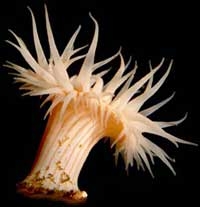 The adult blue whale measures up to ninety feet long and can weigh as much as one hundred fifty tons! Therefore, it is not surprising that blue whales produce the loudest and deepest sounds among all animals. The moans of the blue whale create a complex sound that can be lower than the human audible range. These sounds are so powerful that they can travel through the ocean. And because their hearing is incredibly sensitive, it can be said that blue whales “communicate” with each other over thousands of miles underwater.
The adult blue whale measures up to ninety feet long and can weigh as much as one hundred fifty tons! Therefore, it is not surprising that blue whales produce the loudest and deepest sounds among all animals. The moans of the blue whale create a complex sound that can be lower than the human audible range. These sounds are so powerful that they can travel through the ocean. And because their hearing is incredibly sensitive, it can be said that blue whales “communicate” with each other over thousands of miles underwater.
A smaller species, the humpback whale, is capable of producing a variety of sounds with a melodious tone: moans, grunts, shrieks, murmurs, clicks, whistles, babbles, rumbles, sobs, whispers, and even booming sounds like thunder. Humpback whales are also known for their playful antics. They sing. In fact, they can produce various sounds with a melodious tone: moans, grunts, shrieks, murmurs, clicks, whistles, babbles, rumbles, sobs, whispers, and even booming sounds like thunder.
 The songs of humpback whales are enchanting. They sing repeatedly, note by note, during their mating season in the warm waters off Hawaii, Baja California, and the Caribbean. Members of the same group of whales always sing the same song, or something very similar. Thus, Pacific humpback whales sing one song, while Atlantic humpback whales sing a different one. Surprisingly, each year, their songs differ. After eight months of foraging far away, the whales return to their warm waters to sing the resonant aria from the previous year and add in a few completely new sections.
The songs of humpback whales are enchanting. They sing repeatedly, note by note, during their mating season in the warm waters off Hawaii, Baja California, and the Caribbean. Members of the same group of whales always sing the same song, or something very similar. Thus, Pacific humpback whales sing one song, while Atlantic humpback whales sing a different one. Surprisingly, each year, their songs differ. After eight months of foraging far away, the whales return to their warm waters to sing the resonant aria from the previous year and add in a few completely new sections.





















































